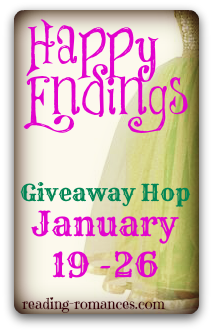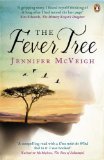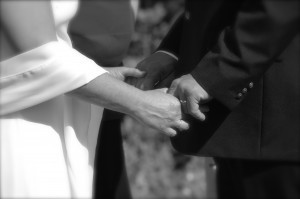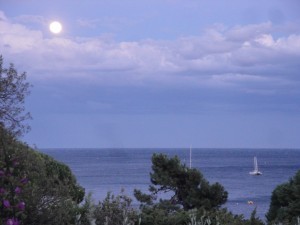Hannah Fielding's Blog, page 138
January 19, 2013
The happy ending (plus win a copy of my romance novel, Burning Embers)

#HEGIVEAWAY
Tell your happy ending story!
The Happy Endings Giveaway Hop was organized by Reading Romances!
What you can win here: One copy of Burning Embers
Number of winners: One
Open to: INT
How to enter: Comment on this post

In honour of the Reading Romances Happy Endings Giveaway Hop, today I’m sharing a happy ending story of my own.
I puzzled over what to share. The story of a little girl growing up in Egypt who one day spread her wings and travelled the world? Of meeting my husband at a drinks party and our unfolding romance which culminated in a beautiful wedding and a honeymoon on the Greek isles? Of the arrival of my beautiful children? Of buying our homes near the sea in Kent and France, all but ruins, and renovating them into happy family homes? Of building my renovation business into a success?
Then, I thought, in a blog that focuses on my writings and readings, there is really only one happy ending to illustrate: that of my becoming a writer.
At what point can one call oneself a writer? I had been writing all my life, from childhood and through motherhood. But a few years ago – on the encouragement of my family, who knew I had draws full of manuscript sheaves – I decided I was finally in a place where I could give my writing my full attention, energy and passion. That was the point, I think, at which I became a writer.
I wrote and wrote, and edited and edited, until finally I knew there was no more I could do to Burning Embers – it was ready. I sent it out to publishers and accepted an offer from Omnific Publishing, and so began the publication process.
When publication day arrived and I held a copy of my first book in my hands, it was a wonderful feeling. But I don’t think this was the pivotal moment for me; the time when I said to myself, ‘I did it!’ That came when the first reviews were posted, and the first emails arrived from readers, and I began to get a sense that people liked my writing and understood me as an author.
Really, there is no happy ending. In Burning Embers, I end the story with two lovers declaring their commitment to each other – but of course their story continues beyond the boundaries of the book. And so it is for me. Writing is so much a part of who I am that there can be no ending; I will continue to writing for as long as I am able. But in the story of a little girl, and then a young woman, and then a mother who dreamed of writing romance novels, the ending is indeed a happy one.
Would you like to escape into a romance with a happy ending? For your chance to win a copy of Burning Embers, simply comment on this post.
January 17, 2013
Book review: The Fever Tree by Jennifer McVeigh
From the blurb:
1880, South Africa – a land torn apart by greed…
Frances Irvine, left penniless after her father’s sudden death, is forced to emigrate to the Cape. In this barren country, she meets two very different men – one driven by ambition, the other by ideals. When a smallpox outbreak sends her to the diamond mines, she is drawn into a ruthless world of greed and exploitation, of human lives crushed in the scramble for power. But here – at last – she sees her path to happiness. Torn between passion and integrity, she makes a choice that has devastating consequences…
The Fever Tree has been well received by critics and is being promoted as part of the UK’s prestigious Richard and Judy Book Club. I can see why! This is a beautifully written book – moving, compelling, engaging. It swept me away to the Africa of the nineteenth century, and while the romance elements are wonderful, this is so much more than a romance. The author’s impeccable research and thoughtful, sensitive approach to the subject matter shines through to create a book that has, as the review on the cover suggests, ‘a Gone With the Wind feel about it’.
Each word is carefully chosen; each sentence and paragraph expertly crafted. This is literature; this is the very beauty of storytelling encapsulated on the page. The characters are so vivid they leap off the pages at you, and I loved the development of the protagonist, Frances, from naïve child to wise and loving woman. The love story is wonderful, and I defy any reader not to love the ending.
Readers of my book Burning Embers will no doubt recognise, on reading The Fever Tree, quite why it speaks to me so much. There is a wealth of parallels: the setting of wild Africa; the protagonist alone in the world having lost her father; her naivety and sheltered upbringing put to the test under the blazing hot sun; the romance that begins aboard a ship; the need to unravel the layers of characters to understand their deepest secrets… And, of course, the fever tree itself, the acacia, features in my own book and is similarly on the cover.
Could I give this book six stars out of five, I would. A wonderful, intelligent debut novel and, I hope, the first of many by this author.
The Fever Tree is available now from Amazon; click on the book cover below to visit the store.
January 16, 2013
Le Marché Français
 I love going to browse at the market in France. It is one of my daily pleasures. Everything looks so bright and fresh.
I love going to browse at the market in France. It is one of my daily pleasures. Everything looks so bright and fresh.
January 15, 2013
Love to last a lifetime
You’re in a bookstore and you pick up a romance novel. You look at the cover, read the blurb and scan the first few pages. What information do you pick up immediately? One of the crucial elements that helps you decide to read the book is an idea of who the heroine is – Beautiful? Feisty? Independent? Intelligent? Unusual? And though you may not realise that it is a consideration, her age is also a factor.
How old do you expect the heroine to be?
In a young adult or new adult book, the answer is quite straightforward. In adult fiction, you find a range. But there’s a cut-off point for that range. In pure, ‘like Hollywood used to make’ romance, the heroine is usually at the younger end of the spectrum; most often younger than 40. We romance authors tend to feel the pull towards younger heroines who lack experience and for whom love and intimacy are new, exciting concepts to be explored and embraced. Of course, you can read romances with older heroines: there’s a sub-genre within women’s contemporary romance fiction (sometimes called ‘chicklit’) that features characters with their first marriage behind them and children, sometimes fully grown ones. But what of the older generation?
A recent survey, commissioned by charity Age UK and involving 2,000 participants, explored how important romance and friendships are for older people. It found that two-thirds of people over the age of 65 believe that having a romantic companion is important, but a sizeable proportion of (35 per cent) feel they are too old to date. In a Daily Telegraph article on the survey, a relationship specialist pointed out that “people should not be put off the by prospect of finding a new partner just because of their age…. growing old is no barrier to romance”. I quite agree!
What do you think about the focus in romance literature on younger characters? Of course, it’s a media-wide phenomenon. Switch on the television to watch a romance film or soap opera and you’ll see lots of youthful, attractive, slim characters – not actually a true reflection of life. I suppose when we’re in ‘romantic mode’, daydreaming and wistful, we think of those early days when we were blossoming into adults; when a mere glance from an attractive stranger from across a crowded room would make our hearts pounds; when life lay stretched out before us full of delicious potential for adventure and connection and a thousand romantic moments.
When it comes to one’s attitude to love and to life as one ages, I can think of no better approach than using time well, as advocated by Charles Dickens in Barnaby Rudge:
Father Time is not always a hard parent, and, though he tarries for none of his children, often lays his hand lightly upon those who have used him well; making them old men and women inexorably enough, but leaving their hearts and spirits young and in full vigour. With such people the grey head is but the impression of the old fellow’s hand in giving them his blessing, and every wrinkle but a notch in the quiet calendar of a well-spent life.
January 13, 2013
David Attenborough’s ‘Africa’: A rich source of inspiration
 One of the elements of my book Burning Embers that readers most often comment on is that the description of Africa is vivid and transports the reader to the wild and exotic Kenya of the year 1970. Take, for example, the following description is extracted from a scene in which the two main characters, Rafe and Coral, are in a hot air balloon taking in the vistas of the Rift Valley and the Masai Mara:
One of the elements of my book Burning Embers that readers most often comment on is that the description of Africa is vivid and transports the reader to the wild and exotic Kenya of the year 1970. Take, for example, the following description is extracted from a scene in which the two main characters, Rafe and Coral, are in a hot air balloon taking in the vistas of the Rift Valley and the Masai Mara:
Gradually the mist had lifted, and the sun burst forth, a ball of fire radiating the sky with unnaturally incandescent hues. Coral was reminded of the strident brushwork and wild colors of the Fauvist paintings that filled her mother’s gallery, which Coral had always loved. The scene was now set for the show to begin: the drama in which the broad, breath-taking landscapes of Africa were the stage and the animals the actors.
… The passengers watched silently as the thrilling spectacle of nature’s daily life unfolded. They caught sight of a herd of elephants rushing toward a lake in the distance: massive, magnificent animals led by the female, their large ears flapping in the morning air. … They saw impalas and antelopes, delighting in mighty leaps into the air, and witnessed large numbers of hippos playing in a big pool close to the surface of the water, while others dozed lazily on the rocks surrounding it, their great pink mouths yawning in the bright gold sun that was now high in the sky. … They glided over a herd of black buffalo, their mighty hooves dredging up clouds of gray dust as they thundered away at full speed. Coral wondered what could have sent the most dangerous beast of the bush into such a panic. They saw zebras, their skin of black and silver stripes glistening in the sun. There were also bucks, rhinos, and undulating towers of giraffes in clusters of six or more — a paradise for a photographer.
I wrote such descriptions of the African landscape and wildlife largely based on my own travels in the country and my reading of books and websites. But recently I have been watching the new BBC wildlife programme Africa by BAFTA-winning broadcaster Sir David Attenborough, and how I wish I could have seen this programme as I was writing! Have you been watching it? The colours, the perspectives, the detail, the moments captured on film: they are absolutely wonderful. The sheer scale of the country takes my breath away – fires bigger than the UK; savannahs stretching beyond the bounds of America. Then, from the epic, sweeping aerial shots that make you realise the awesome size of a location, the camera work drills down to the most minute detail – the swish of a giraffe’s tail; a money’s fur lazily wafting in the breeze.
On its opening night of broadcast, Africa was the most-watched programme on UK television, with 6.5 million viewers tuning in to see Attenborough’s latest offering. There is something timeless about his work – for so many years he has been making natural history programmes that break new ground in the field. As a Daily Telegraph reviewer noted, “After 60 years of Attenborough’s nature programmes, his narration is as familiar and evocative of childhood as the Shipping Forecast.” His filmography is surely unsurpassed by any other, and personally I find his work moving – and very inspirational for my writing, which is always closely attuned to its setting. I highly recommend taking a look at this latest series. You can watch the trailer for the programme below, and if you visit the BBC iPlayer website, you can watch full episodes.
January 11, 2013
Book review: Summerset Abbey by TJ Brown
The first book of a sweeping trilogy set in Edwardian England. From the blurb:
1913: In a sprawling manor on the outskirts of London, three young women seek to fulfill their destinies and desires amidst the unspoken rules of society and the distant rumblings of war. . . .
Rowena Buxton: Sir Philip Buxton raised three girls into beautiful and capable young women in a bohemian household that defied Edwardian tradition. Eldest sister Rowena was taught to value people, not wealth or status. But everything she believes will be tested when Sir Philip dies, and the girls must live under their uncle’s guardianship at the vast family estate, Summerset Abbey. Standing up for a beloved family member sequestered to the “underclass” in this privileged new world, and drawn into the Cunning Coterie, an exclusive social circle of aristocratic “rebels,” Rowena must decide where her true passions—and loyalties—lie.
Victoria Buxton: Frail in body but filled with an audacious spirit, Victoria secretly dreams of attending university to become a botanist like her father. But this most unladylike wish is not her only secret—Victoria has stumbled upon a family scandal that, if revealed, has the potential to change lives forever. . . .
Prudence Tate: Prudence was lovingly brought up alongside Victoria and Rowena, and their bond is as strong as blood. But by birth she is a governess’s daughter, and to the lord of Summerset Abbey, that makes her a commoner who must take her true place in society—as lady’s maid to her beloved “sisters.” But Pru doesn’t belong in the downstairs world of the household staff any more than she belongs upstairs with the Buxton girls. And when a young lord catches her eye, she begins to wonder if she’ll ever truly carve out a place for herself at Summerset Abbey.
This first book in the trilogy lays strong foundations. By the end of the book I liked each of the three female lead characters, and was keen to see them find love and their place in the Edwardian world. I loved the setting – Edwardian England was such an exciting time, with new battling old – and the themes explored, from the suffragists and the upper class versus the serving class, to the newfangled contraptions known as aeroplanes and the right of a woman to make her own, independent choices.
Prudence Tate feels like the main character for me in this first book, though we do see the story from other perspectives as well. She’s a likeable character, and a good deal of mystery surrounds her past which, as I read on, I was keen to find unravelled. There is more than one suitor on the horizon, making this a less obvious romantic read than many.
For me, the expert handling of three characters’ points of view makes this a very readable book that moves along at pace. There’s plenty happening to hold your interest, but also lots of exploration of characters’ thoughts, feelings and motivations, which I like to see in a book. The book feels well grounded in research and believable in its time and place; indeed, I enjoyed learning some new facts about the era. And the writing style hits just the right note, and makes for an easy, page-turning read.
If you read this book, you’ll find yourself keen to read the next in the trilogy – not least because while there is an end point for the story, it is very much left open for the next book to take up the tale. I shall certainly watch for the publication of the next title, and I look forward to seeing where the author will take the characters next.
Summerset Abbey is available now from Amazon; click on the book cover below to visit the store.
January 9, 2013
Where day and night collide
January 8, 2013
England’s best literary locations: ten top haunts for book lovers and writers
The dawn of the New Year always makes me think of travel, after the stillness of Christmas. I like to get away somewhere sunny and warm for a few weeks; the perfect antidote to the Kentish winter. But when planning my travel for the year, I try not to neglect the countries in which I’m based –England and France. One of the elements of England I most love is the rich literary heritage, and today I’m sharing with you my ten favourite literary locations – for books lovers and authors who, like me, draw inspiration from the writers of days gone by.
Westminster Abbey, London: Nowhere on earth can you be close to such a plethora of writing talent as in Poets’ Corner; it’s inspiring and humbling to visit. Writers interred here include Tennyson, Robert Browning, and Dr Samuel Johnson, Charles Dickens, Rudyard Kipling and Thomas Hardy. Those who have memorials here include John Milton, William Wordsworth, John Keats, Percy Bysshe Shelley, Robert Burns, William Blake, T.S. Eliot and Gerard Manley Hopkins, to name but a few.
The Rose Theatre, London: The theatre in which many of Shakespeare’s and Marlowe’s plays works were performed for the public, and a stunning building. While in the area, wander along to London Bridge and find Nancy’s Steps – setting for the murder of Nancy in Dickens’ Oliver Twist.
Rochester: The setting of Great Expectations and the home town of Charles Dickens. Here you’ll find a range of Dickens-inspired tea rooms and quaint pubs, and Rochester Castle is magnificent. Best of all, Rochester is second-hand bookshop heaven, and boasts the largest one in the UK.
Stratford-upon-Avon: Home of William Shakespeare. If you get the chance, take in a performance at the Royal Shakespeare Theatre, and visit Anne Hathaway’s cottage.
Bath: Setting for Jane Austen’s atmospheric novels, and a beautiful city, full of wonderful boutiques, delightful eateries and breathtaking architecture. No visit is complete without a trip to the Jane Austen centre, right by her house, where you can see original manuscripts.
Whitby: Inspiration for Bram Stoker’s Dracula, with the imposing ruins of Whitby Abbey and myriad cobbled streets to explore. You can take a Bram Stoker guided tour, and if you visit in October, you can catch the Bram Stoker Film Festival. A must-visit place for vampire fiction aficionados.
Brontë country: See for yourself the wild and beautiful landscapes that inspired authors Charlotte, Emily and Anne Brontë and visit their home, now the Brontë Parsonage Museum. No visit to the area is complete without a hearty hike across a rugged heath where you can hear Cathy’s call to Heathcliff on the wind.
221b Baker Street, London: Home of Sherlock Holmes and now a museum.
The Lake District: Take some time out to explore this Area of Outstanding Beauty, which was the writing location of choice for William Wordsworth, Samuel Taylor Coleridge, John Ruskin, Beatrix Potter and Arthur Ransome.
Oxford: Literary connections abound in this city of dreaming spires. The legacies of CS Lewis and JRR Tolkien are particularly strong here; and Oxford is the setting for Philip Pulman’s His Dark Materials trilogy and was home to the real Alice in Wonderland. Fit in a walk around Christ Church College too, where you’ll be magically transported to Hogwarts…
January 7, 2013
New Year’s resolutions for readers
A happy New Year to you all! It’s such a wonderful time of the year, full of hope and aspirations. Spring is a while off, but the promise of it lingers in the air, and the whole year stretches ahead, a wonderfully clean slate, full of unknown wonders.
Do you make New Year’s resolutions? Apparently, these are the most common resolutions:
Drink less alcohol
Eat healthy food
Get a better education
Get a better job
Get fit
Lose weight
Manage debt
Manage stress
Quit smoking
Reduce, reuse, and recycle
Save money
Take a trip
Volunteer to help others
All admirable indeed! But for me, reading always appears in my resolutions alongside those related to my own and others’ wellbeing (as does writing, which is largely informed by the reading). I once read that if you want to keep a New Year’s resolution, you should make it positive rather than negative – so rather than resolving to stop eating chocolate, you resolve to eat more healthy foods, and rather than resolving to quit gossiping, you resolve to be more compassionate towards people. It’s also a fact that you’re much more likely to stick to a resolution you actually enjoy keeping (and who enjoys eating less chocolate!). With these basic principles of resolution in mind, here are some ideas for resolutions that can inspire readers:
Read every day.
Read a book a week (or a day, if you’ve the time and the reading speed).
Read one book of classic literature each month.
Read poetry.
Read to your children every day (and resist the urge to skip pages!).
Re-read the complete works of your favourite author.
Read a book in a genre you would never usually explore.
Read a book that everyone’s talking about.
Read the most obscure, unloved looking book you can find.
Go to your local library, often.
Buy books second hand, and after reading them, donate them to charity.
Keep a reading journal, or start a book blog.
Join a reading group (can’t find one? Start your own…).
The beauty of making a reading resolution is that there can be no regrets. Reading can only enrich your life, through the comfort and escapism it affords, and the knowledge you gain.
BBC journalist Matthew Davis made a resolution in 2012 to read the complete works of Charles Dickens – that’s four million words. He read a little every day, achieved his target, and now says, “I would … heartily recommend the principle of doing one thing each day for an entire 12 months, and basking in the satisfaction of a year’s worth of endeavour.” (You can read the full story at http://www.bbc.co.uk/news/magazine-20663427.) I very much like the principle. What do you think?










